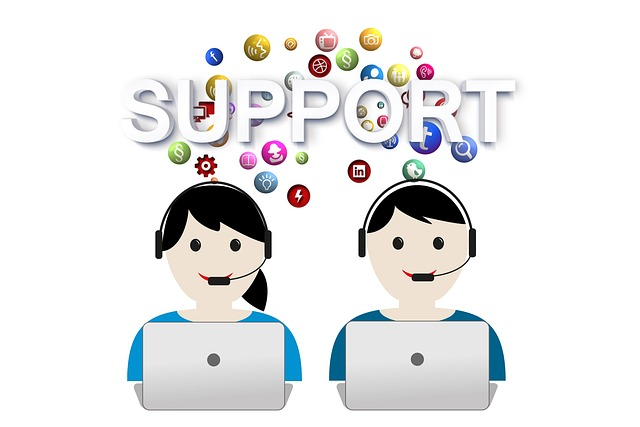Ever wondered how you can transform your call center operations? Speech analytics is the game-changer you’ve been searching for. Read how speech analytics can power up your performance.
What is Speech Analytics Software?
Speech analytics software is a powerful tool that analyzes voice recordings from call centers to extract valuable insights, improve customer service, and monitor agent performance using machine learning and natural language processing.
Why Call Center Should Use Speech Analytics Software?

Enhancing Customer Satisfaction through Sentiment Analysis
Speech analytics tools employ sentiment analysis and natural language processing to gauge customer sentiment during conversations.
By analyzing tone, pitch, and word choice, these tools can identify customer dissatisfaction or happiness, allowing agents to adjust their approach in real-time.
This immediate feedback loop not only resolves issues efficiently but also enhances the overall customer experience.
For example, if a customer expresses frustration, the system can prompt agents to offer specific solutions or escalate the call to a supervisor, ensuring that customer needs are addressed promptly and effectively.
Improving Agent Performance with Real-Time Feedback
Utilizing real-time speech analytics, call centers can monitor and improve agent performance continuously.
This technology provides immediate feedback to agents based on their interactions, highlighting areas of excellence and those needing improvement.
For instance, if an agent frequently interrupts customers, the system can alert and guide them to practice better listening skills.
Over time, this leads to a more skilled and empathetic workforce, directly impacting customer satisfaction positively.
Identifying Trends and Extracting Meaningful Insights
Speech analytics software excels in extracting meaningful insights from customer conversations, helping contact centers identify trends and make data-driven decisions.
By analyzing a vast amount of unstructured voice data, these tools can uncover patterns related to customer needs, preferences, and dissatisfaction points.

This enables contact center managers to adapt strategies, enhance service quality, and even influence product development, ensuring they stay ahead of customer expectations and industry shifts.
Streamlining Contact Center Operations
Implementing speech analytics in contact center operations revolutionizes efficiency and quality management.
By automatically tracking and assessing calls, these tools provide actionable insights that streamline processes and improve quality assurance.
For example, analyzing call volume and content can help allocate resources more effectively, reducing wait times and improving the customer journey.
Furthermore, speech analytics can identify poor agent performance patterns, allowing for targeted training and development.
Risk Management and Compliance Assurance
In highly regulated industries, speech analytics tools play a crucial role in risk management and compliance.
By monitoring and analyzing every customer interaction, these tools ensure that agents adhere to legal and company standards, automatically alerting supervisors to potential compliance breaches.
This capability not only protects the organization from legal repercussions but also builds customer trust by maintaining high standards of professionalism and ethical conduct.
How Does Call Center Speech Analytics Work?
Implementing speech analytics in a call center involves a series of steps designed to capture, analyze, and act upon the insights derived from customer interactions.
This process transforms raw, unstructured voice data into actionable insights, significantly enhancing customer satisfaction and operational efficiency.
Here’s how call center speech analytics works, step by step:
- Recording Customer Calls: The first step is to record voice conversations between call center agents and customers. This includes all types of interactions within the call center environment, from inbound customer service calls to outbound sales call center efforts. Every phone call is captured in its entirety to ensure a comprehensive dataset for analysis.
- Converting Voice to Text: Using advanced speech recognition technology, the recorded calls are then converted from human speech into text. This conversion process allows the speech analytics tool to process and analyze the content of conversations more efficiently, making it easier to identify patterns, keywords, and sentiments.
- Analyzing the Text Data: Once converted to text, the analytics software applies natural language processing (NLP) and artificial intelligence (AI) to analyze the content. This stage involves identifying trigger words, phrases, and sentiments that indicate customer preferences, satisfaction levels, and areas of concern. The technology looks for specific patterns that relate to customer loyalty, engagement, and potential churn.
- Extracting Meaningful Insights: Through the analysis, the system extracts meaningful insights from the customer interactions. This includes understanding customer needs, identifying areas for improvement, and recognizing successful interactions. These insights are vital for assessing overall customer sentiment and satisfaction levels.
- Identifying Areas for Action: Based on the insights gathered, the speech analytics software identifies specific areas where actions can be taken to improve customer satisfaction and agent performance. This could involve alerting agents to potential customer dissatisfaction, identifying training needs for contact center agents, or adjusting scripts to better meet customer preferences.
- Implementing Changes and Monitoring Results: With the insights and recommendations in hand, the contact center can then implement changes to improve the customer experience. This could range from personalized training programs for agents, adjusted communication strategies, or even product and service improvements. The effectiveness of these changes is continuously monitored through ongoing analysis of customer calls and feedback.
- Post Call Analytics and Reporting: The final step involves post-call analytics and generating detailed reports on customer interactions, agent performance, and overall call center efficiency. These reports provide a clear picture of how changes have impacted customer satisfaction and offer further insights into areas that require attention or improvement.
Benefits of Using Speech Analytics Tools for Call Center Environment

Enhancing Customer Feedback Analysis
Contact center speech analytics transforms the vast ocean of phone calls into actionable customer feedback.
By leveraging voice analytics tools, organizations can dissect conversations to extract meaningful insights about customer satisfaction and expectations.
This granular analysis helps in identifying areas for service improvement, directly influencing customer retention strategies.
The right speech analytics software captures subtle nuances in tone and sentiment, turning every call into a valuable feedback loop.
Streamlining Agent Performance Evaluation
Implementing speech analytics technology in a call center environment revolutionizes the assessment of call center agent performance.
By analyzing various metrics such as call duration, speech patterns, and compliance with protocols, supervisors can identify best practices and areas needing improvement.
This data-driven approach allows for personalized coaching sessions, ensuring agents are well-equipped to enhance customer engagement, thereby reducing customer churn rates.
Real-Time Assistance and Alert Mechanisms
Different speech analytics tools come equipped with capabilities that alert agents in real-time when specific trigger words or emotional cues are detected. This immediate feedback loop enables agents to adjust their approach mid-conversation, addressing customer concerns more effectively.

Such interventions can prevent potential escalations, improve the customer experience, and contribute to a more dynamic and responsive call center environment.
Driving Customer Retention Strategies
Speech analytics insights glean from customer conversations are invaluable in understanding the factors leading to customer churn.
By identifying common grievances or service gaps, companies can proactively implement strategies to retain customers.
This proactive approach to addressing concerns, informed by direct customer feedback through voice analytics, fosters a culture of continuous improvement and customer-centricity.
Improving Compliance and Risk Management
The capabilities of speech analytics extend beyond customer service enhancement to include compliance monitoring and risk management.
By continuously analyzing conversations for compliance with regulatory requirements and internal policies, speech analytics technology mitigates legal and reputational risks.
Automated alerts can notify supervisors of non-compliance incidents, ensuring swift corrective actions are taken.
Unlocking Advanced Customer Insights with Text Analytics
Integrating text analytics with speech analytics offers a comprehensive view of customer interactions across different channels.
This combination allows for the extraction of insights not just from spoken words but also from written communication, enabling a deeper understanding of customer needs and preferences.
Such insights are crucial in tailoring products and services to match customer expectations, thereby improving overall satisfaction.
Personalizing Customer Experiences
Voice analytics and speech analytics capabilities enable the personalization of customer experiences by analyzing historical interactions to understand individual customer preferences and behaviors.

Identifying trigger words and sentiment trends helps customize conversations, making customers feel valued and understood. This level of personalization enhances customer engagement and loyalty, setting the foundation for long-term relationships.
Enhancing Product and Service Development
Speech analytics insights play a pivotal role in product and service development by identifying unmet needs and areas for innovation. Listening to customer calls helps uncover gaps in the market, informing the development of solutions that directly address customer pain points.
This customer-driven approach to innovation ensures that new offerings are well-received and meet the actual needs of the target audience, ultimately contributing to business growth.
Key Takeaways
- Speech analytics transforms vast volumes of call center interactions into actionable customer feedback.
- Implementing speech analytics in contact centers significantly enhances agent performance evaluation and coaching.
- Real-time speech analytics can alert agents to adjust their approach during conversations, improving customer satisfaction.
- Call center speech analytics is crucial for developing strategies to reduce customer churn by analyzing reasons behind customer dissatisfaction.
- By ensuring compliance and managing risks, speech analytics tools safeguard call centers against potential legal repercussions.
- Integrating machine learning with speech analytics leads to more accurate identification of trends and customer preferences.
- Combining text and speech analytics offers a comprehensive understanding of customer needs across multiple communication channels.
- Identifying trigger words and sentiment trends through speech analytics allows for personalized customer interactions.
- Speech analytics insights drive innovation and development in products and services by revealing unmet customer needs.
- Quality management in the call center environment is significantly improved by the implementation of speech analytics.
Conclusion
The utilization of speech analytics in the call center environment presents a transformative opportunity for contact centers to elevate customer service, agent performance, and overall operational efficiency. By leveraging the power of speech analytics tools, businesses can extract valuable insights, identify areas for improvement, and tailor customer interactions to meet specific needs and preferences.
The ability to implement speech analytics and integrate it with machine learning technologies further enriches the quality management process, ensuring that customer feedback is at the heart of decision-making.
Whether it’s improving agent performance, enhancing customer engagement, or managing risks, speech analytics offers a pathway to meaningful insights and actionable strategies.
Now it’s your turn to harness the potential of speech analytics, identify trigger words, and redefine excellence in your center environment.
Good luck!
FAQ
How to do speech analytics?
Implement a speech analytics tool in call centers to analyze audio data, identify through voice patterns, and extract insights to improve call center speech analysis and identify areas for enhancement.
What is analytics call center?
An analytics call center utilizes advanced data analysis tools to evaluate customer interactions, aiming to enhance service quality, operational efficiency, and customer satisfaction.
What is Verint speech analytics?
Verint speech analytics is a tool designed for analyzing voice communications in call centers to uncover customer insights, identify areas of improvement, and enhance overall customer engagement.
What is AI speech analytics?
AI speech analytics refers to the use of artificial intelligence technologies in speech analytics tools to analyze call data, identify through patterns, and extract valuable insights for call centers.
How to Use Call Center Speech Analytics?
Identify trends in-apps, and implement one in your team!



